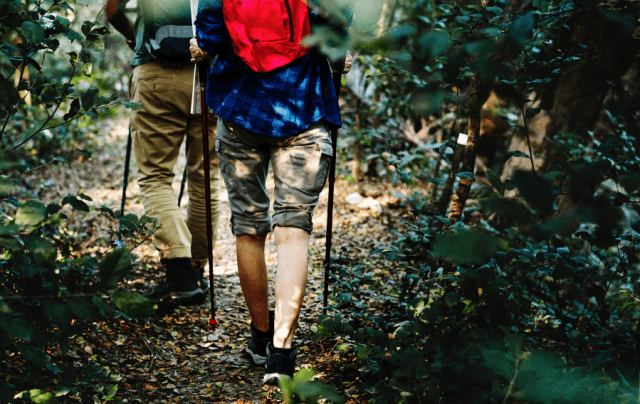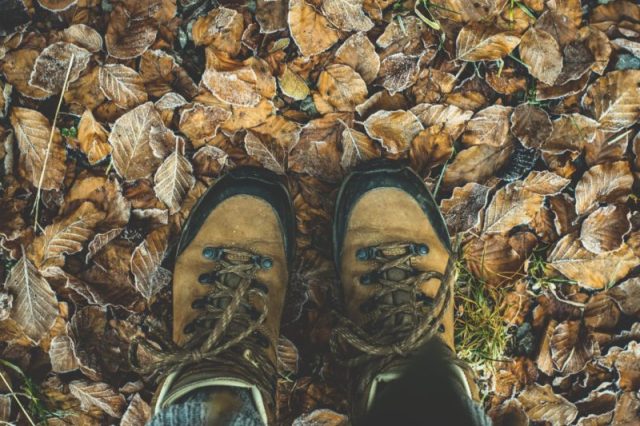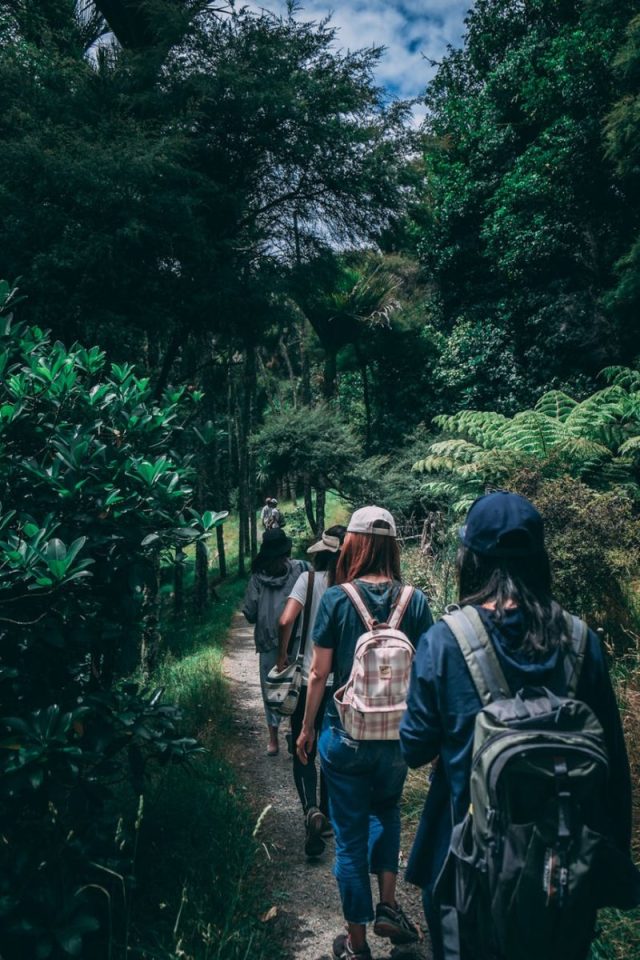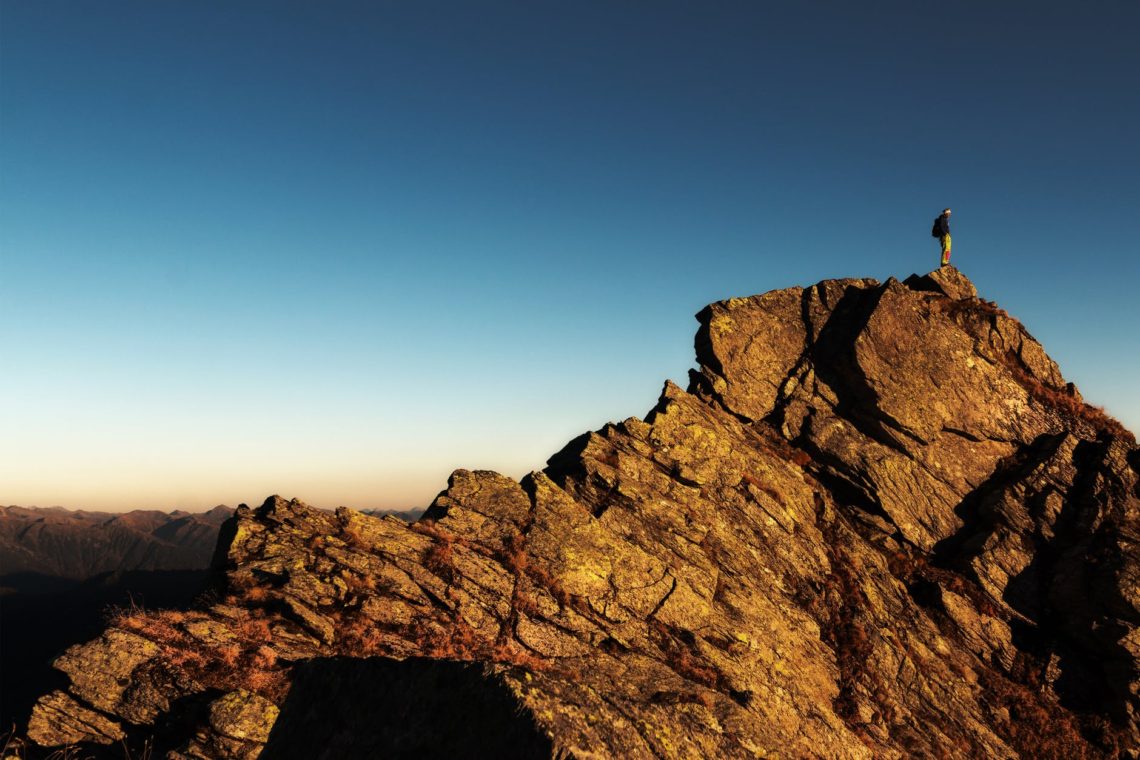If you’re a nature lover or an adventure seeker, then hiking is the perfect activity for you. Whether you’re just getting started or have some experience under your belt, there’s a hike out there that’s right for you. For beginners, it’s best to start with easy canyon hikes and gradually increase the difficulty as you become more comfortable. Before heading out, always check the weather and dress appropriately to ensure a comfortable and safe experience. It’s also important to wear shoes with good grip to avoid slipping or getting blisters. During the hike, remember to maintain a steady pace and stay hydrated. Packing light is key, but don’t forget to bring a first-aid kit for safety. If you’re new to hiking, consider joining a group or hiring a guide to make the experience even more enjoyable. So lace up your boots and get ready for an unforgettable adventure surrounded by the beauty of nature. And while you’re at it, here are some traveling tips and must-visit places around the world to further ignite your wanderlust.

This image is property of i0.wp.com.
Benefits of Hiking
Hiking is a wonderful activity that offers a multitude of benefits for both your physical and mental well-being. Whether you are a nature lover seeking to connect with the great outdoors or an adventure enthusiast craving thrilling experiences, hiking has something to offer everyone.
Connecting with Nature
One of the greatest benefits of hiking is the opportunity to immerse yourself in the beauty of nature. As you traverse through scenic trails, you will be surrounded by breathtaking landscapes, fresh air, and the soothing sounds of birds chirping or water flowing. The tranquility of nature can help you escape the hustle and bustle of daily life, allowing you to find inner peace and rejuvenation.
Thrilling Adventure
Hiking is not just about enjoying the serenity of nature; it also provides an exhilarating sense of adventure. Imagine standing at the edge of a towering peak, feeling a rush of adrenaline as you conquer challenging terrains, or crossing over magnificent suspension bridges. Each step you take on the trail is filled with excitement and the promise of new discoveries. Hiking can truly awaken your sense of adventure and leave you with unforgettable memories.
Physical and Mental Health Benefits
In addition to the connection with nature and the thrill of adventure, hiking offers numerous physical and mental health benefits. It is a fantastic way to improve your cardiovascular fitness and endurance, as it engages your entire body in a low-impact workout. The varying terrains and inclines of hiking trails challenge your muscles, leading to improved strength and flexibility.
Moreover, spending time outdoors hiking can have a positive impact on your mental health. Studies have shown that exposure to nature can reduce stress, anxiety, and depression. Hiking allows you to unplug from technology, reconnect with yourself, and find solace in the beauty of the natural world. It provides a perfect opportunity to practice mindfulness and gain mental clarity.
Choosing the Right Hike
When it comes to choosing a hiking trail, it’s important to consider your fitness level and experience. Selecting the right hike ensures that you have an enjoyable and safe outdoor experience.
Consider Fitness Level
If you are new to hiking or have a sedentary lifestyle, it’s crucial to start with hikes that match your fitness level. A strenuous and challenging hike may quickly become overwhelming and discourage you from continuing. Assess your physical capabilities, such as endurance and strength, before embarking on a hike. Gradually increase the difficulty level as you gain more experience and confidence.
Start with Easy Hikes
For beginners, easy hikes are a great way to ease into the world of hiking. Look for trails with gentle slopes, shorter distances, and well-marked paths. These hikes often provide beautiful scenery without being too physically demanding. They allow you to build your stamina, get accustomed to being on the trail, and experience the joy of hiking at a pace that suits your abilities.
Gradually Increase Difficulty
As your fitness level improves and you become more comfortable with hiking, you can gradually move on to more challenging trails. Moderate hikes with steeper inclines or longer distances can test your endurance and push your limits. These hikes offer a greater sense of accomplishment and reward you with stunning views or hidden gems along the way. Just remember to pace yourself and listen to your body to avoid overexertion or injury.
Preparing for a Hike
Proper preparation is key to having a safe and enjoyable hiking experience. Here are some important steps to take before setting off on a hike.
Checking Weather Conditions
Before heading out, it is crucial to check the weather forecast for the hiking area. Weather conditions can greatly impact your safety and comfort on the trail. Avoid venturing out during extreme weather, such as heavy rain, thunderstorms, or extreme heat. Be aware of any changes in weather patterns throughout the day, as conditions can quickly shift in mountainous areas. Dressing appropriately for the expected weather will ensure that you are prepared for any challenges that may arise.
Appropriate Dressing
Choosing the right attire for hiking is essential to protect yourself from the elements. Lightweight, moisture-wicking clothing is recommended as it keeps you cool and dry during physical activity. Layering is also important to accommodate changes in temperature as you ascend or descend elevations. Wear a brimmed hat to shield your face from the sun, and don’t forget to apply sunscreen to exposed skin. Additionally, consider packing a lightweight waterproof jacket and pants in case of unexpected rain.
Choosing the Right Shoes
Investing in a good pair of hiking shoes is crucial for a comfortable and safe hiking experience. Look for shoes with sturdy soles and good grip to prevent slipping on uneven or slippery surfaces. Trail-running shoes or hiking boots are ideal for most hiking trails, providing ankle support and protection from rocks or debris. Make sure to break in your hiking shoes before embarking on a long hike to avoid blisters and discomfort.
Hiking Techniques
While hiking is a leisurely activity, it’s important to use proper techniques to ensure your safety and maximize your enjoyment on the trail.
Maintaining a Steady Pace
Hiking is not a race, so it’s important to maintain a steady pace that suits your fitness level. Avoid pushing yourself too hard at the beginning of a hike, as it can lead to fatigue and burnout. Find a comfortable rhythm that allows you to enjoy your surroundings and conserve energy for longer hikes. Remember, it’s all about the journey and not just reaching the destination.
Staying Hydrated
Staying hydrated is crucial during hikes, especially in warmer climates or high altitudes. Dehydration can lead to fatigue, dizziness, and even more serious health issues. Carry an adequate amount of water and drink regularly throughout the hike to replenish the fluids lost through sweat. Consider using a hydration pack or water bottle with a built-in filter for convenience.
Taking Breaks
While it’s important to maintain a steady pace, don’t forget to take breaks and rest along the trail. Taking short breaks allows your muscles to recover and prevents overexertion. Utilize these breaks to admire the natural beauty around you, have a snack, or simply catch your breath. Remember, hiking is not just about reaching the end; it’s about enjoying the entire journey.

This image is property of i0.wp.com.
Safety Measures
Safety should always be a top priority when hiking. By taking a few precautions and being well-prepared, you can minimize risks and enjoy a safe hiking experience.
Packing Light
Packing smart and light is essential for a comfortable hike. Avoid overloading your backpack with unnecessary items, as it can strain your back and slow you down. Prioritize essential items such as water, snacks, a map, a compass or GPS device, a whistle, and a flashlight. It’s also a good idea to pack a lightweight emergency blanket and a multi-tool in case of unexpected situations.
Bringing a First-Aid Kit
Accidents and injuries can occur even on well-maintained hiking trails. Carrying a well-stocked first-aid kit is essential to address minor injuries, such as cuts, blisters, or insect bites. Include basic supplies like bandages, antiseptic wipes, pain relievers, and any necessary personal medications. Familiarize yourself with basic first-aid procedures before heading out on a hike.
Knowing Basic Survival Skills
While the chances of facing a survival situation during a hike are slim, it’s important to be prepared for the unexpected. Learn basic survival skills such as starting a fire, building a shelter, and using a compass or navigation app. Being equipped with these skills can provide you with peace of mind and the ability to handle unforeseen circumstances.
Hiking in a Group
Hiking with others can enhance your overall experience and provide added safety, especially if you are a beginner or unfamiliar with the trail.
Benefits of Hiking in a Group
Hiking in a group offers numerous benefits. It provides companionship, increases safety, and allows for shared experiences. A group can offer support and encouragement, build camaraderie, and create lasting memories. Additionally, experienced hikers in the group can offer guidance and knowledge, helping beginners navigate the trail with confidence.
Finding Hiking Partners
If you don’t have a group of friends interested in hiking, there are various ways to find hiking partners. Joining local hiking groups or outdoor clubs allows you to connect with like-minded individuals and participate in organized hikes. Social media platforms and online forums dedicated to hiking can also be great resources for finding hiking partners or establishing hiking meetups.
Joining Guided Hikes
For those who prefer a structured experience, joining guided hikes can be a fantastic option. Guided hikes are led by experienced hikers or professional guides who are familiar with the trail and can provide valuable knowledge about the area’s history, flora, and fauna. These hikes often come with additional services such as transportation, meals, and camping arrangements, simplifying the planning process for beginners.

This image is property of i0.wp.com.
Popular Hiking Destinations
The world is filled with awe-inspiring hiking destinations. Here are a few popular ones that offer breathtaking scenery and unforgettable experiences.
Machu Picchu, Peru
Machu Picchu, the ancient Inca city nestled high in the Andes Mountains, is a bucket-list destination for hikers. The Inca Trail is the most famous route to reach this archaeological wonder, offering stunning vistas of the surrounding mountains and lush cloud forests. Hiking through this historical and cultural landscape is a truly transformative experience that immerses you in the mystique and grandeur of the Inca civilization.
Yosemite National Park, USA
Yosemite National Park in California is a haven for outdoor enthusiasts and nature lovers. The park boasts a vast network of hiking trails, from leisurely strolls to challenging hikes up to iconic landmarks like Half Dome and El Capitan. Hiking through Yosemite’s breathtaking valleys, towering granite cliffs, and cascading waterfalls provides a deep sense of awe and serenity, making it an unforgettable destination for hikers.
Mount Kilimanjaro, Tanzania
Reaching the summit of Mount Kilimanjaro, the highest peak in Africa, is a remarkable achievement for hikers seeking adventure and a sense of accomplishment. The various routes to the summit offer diverse landscapes, from dense rainforests to alpine deserts. As you ascend through multiple climate zones, you’ll witness astonishing changes in scenery, flora, and fauna. Standing at the “Roof of Africa” is an experience that will stay with you forever.
Exploring Local Trails
While exotic international destinations offer incredible hiking experiences, don’t overlook the beauty that can be found in your own backyard. Exploring local trails allows you to connect with your community, discover hidden gems, and appreciate the wonders of your own region.
Researching Nearby Hiking Trails
Start by researching nearby hiking trails in your area. Local parks, wilderness areas, and nature reserves are often home to well-maintained trails suitable for hikers of all levels. Visit websites or contact local hiking clubs for information on trail lengths, difficulty levels, and notable features. By taking the time to research and plan, you can ensure that you find the perfect trail for your preferences and abilities.
Checking Trail Difficulty
When exploring local trails, it’s important to check the difficulty level to ensure a safe and enjoyable experience. Trail difficulty ratings often help hikers understand what to expect in terms of terrain, elevation gain, and overall fitness requirements. Beginners may opt for easier trails with minimal elevation gain, while more experienced hikers may seek out challenging routes that test their skills.
Discovering Hidden Gems
Local trails often hide beautiful surprises that are waiting to be discovered. Scenic viewpoints, hidden waterfalls, unique geological formations, or historical landmarks can be found along lesser-known trails. Stay curious and open-minded as you journey through local trails, and take the time to explore side paths or detours that lead to hidden treasures. These hidden gems often offer a sense of tranquility and a deeper connection with your surroundings.

This image is property of i0.wp.com.
Leave No Trace
Responsible hiking involves minimizing your impact on the environment and preserving the natural beauty for future generations. The Leave No Trace principles provide guidelines to follow while exploring the great outdoors.
Respecting Nature
Respecting nature is at the core of Leave No Trace principles. Avoid damaging or removing plants, picking flowers, or disturbing wildlife. Stay on designated trails to prevent trampling fragile vegetation and causing soil erosion. It’s also important to remain observant and avoid making excessive noise that may disrupt wildlife or other hikers’ experiences.
Proper Waste Disposal
When hiking, it’s crucial to practice proper waste disposal. Carry a small trash bag to collect and carry out any litter you may generate. Never leave trash behind, as it can harm wildlife and spoil the natural beauty of the area. If nature calls, use a trowel to dig a small hole at least 6-8 inches deep to bury human waste, away from trails, water sources, and campsites.
Minimizing Environmental Impact
Minimizing your environmental impact goes beyond waste disposal. Avoid creating new trails or cutting switchbacks, as this can lead to erosion and habitat destruction. Camp only in designated areas to minimize your impact on fragile ecosystems. Be mindful of campfire regulations and use established fire rings when permitted. It is also important to conserve water and use it sparingly to minimize strain on local water sources.
Tips for a Memorable Hiking Experience
To further enhance your hiking experience and create lasting memories, here are a few additional tips to keep in mind.
Capture Beautiful Moments
Don’t forget to bring your camera or smartphone to capture the breathtaking moments and stunning views you encounter along the trail. Photography allows you to share the beauty of nature with others and relive the memories of your hiking adventures.
Learn About Flora and Fauna
Take the time to learn about the flora and fauna you may encounter during your hikes. Identify local plant species, observe wildlife from a safe distance, and educate yourself about the ecological significance of the area. This knowledge adds depth to your hiking experience and fosters a greater appreciation for the natural world.
Follow Hiking Etiquette
Respecting other hikers allows everyone to enjoy the trail and maintain a positive hiking experience. Follow hiking etiquette by yielding to uphill hikers, keeping noise levels to a minimum, and stepping aside to allow faster hikers to pass. Respect the tranquility of nature by avoiding playing loud music or engaging in disruptive activities that may disturb others.
Hiking provides a gateway to adventure, self-discovery, and a deeper connection with nature. Whether you choose to embark on an epic journey to Machu Picchu, explore the beauty of Yosemite National Park, or simply embrace the trails in your local area, hiking offers endless opportunities for exploration and personal growth. So lace up your hiking boots, venture out onto the trails, and prepare to be amazed by the wonders that await you in the great outdoors.

This image is property of i0.wp.com.
